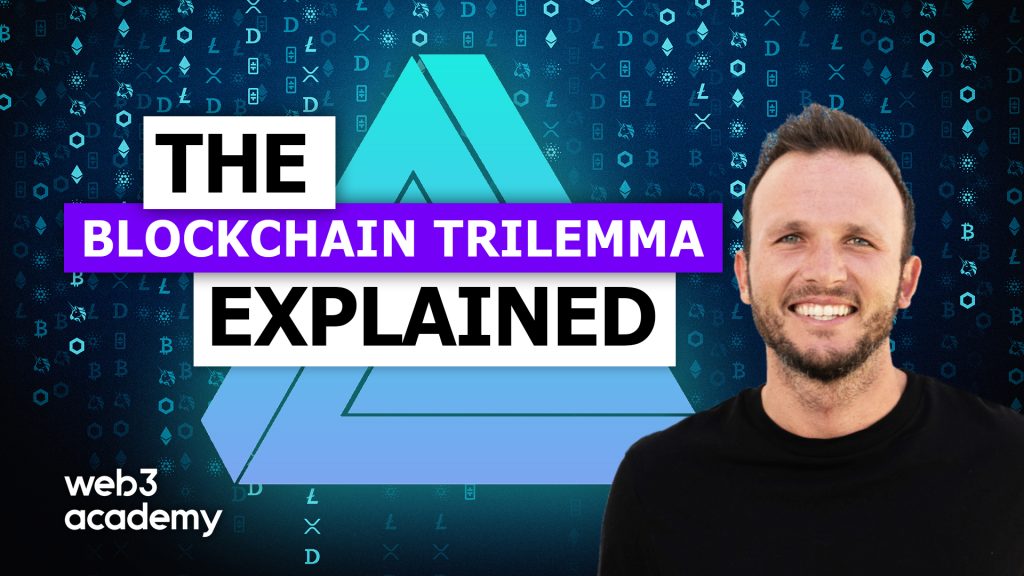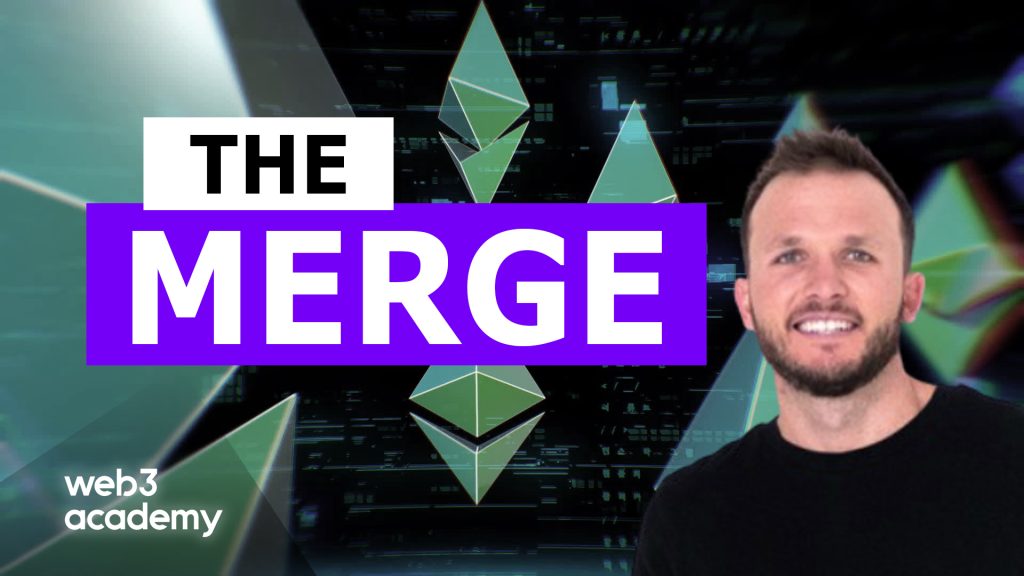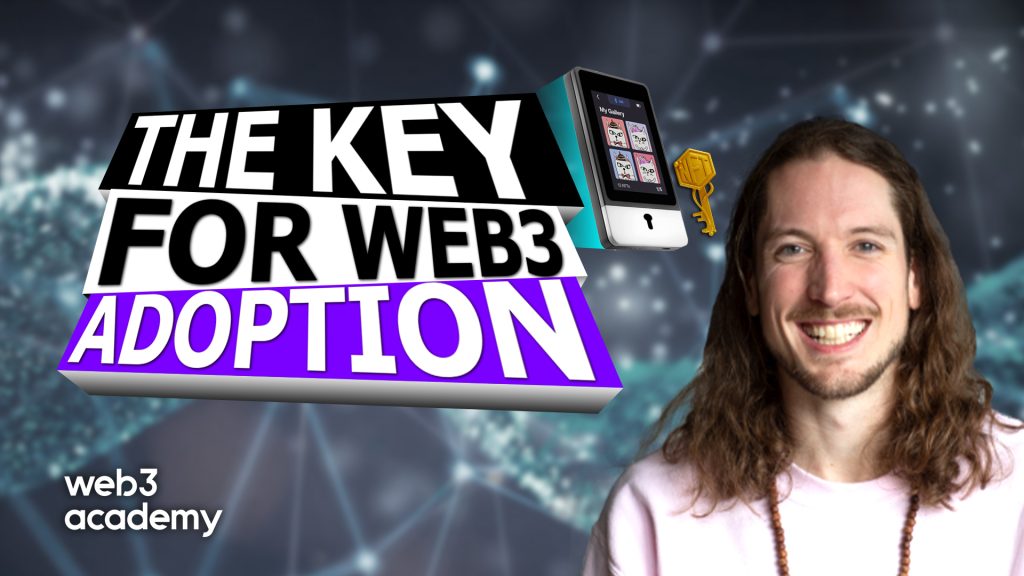The Ultimate Web3 Dictionary
Welcome to Web3 Academy!
Together with our community, we’ve designed this ultimate Web3 dictionary so that you can settle your confusion about random words and phrases you see on Twitter. Enjoy ✌️
This dictionary has been built by Raul Chisluca and Ryoma Martin!
A
Airdrop: Retroactively distributing a digital asset (token or NFT) to numerous wallet addresses, for free, in order to promote awareness and reward community members/early users or to decentralize ownership of protocols or voting rights, among other reasons.
Alpha: Exclusive, privileged information. Mainly used for news.
Altcoins (alts): Short for alternative coins. Represents cryptocurrencies other than Bitcoin (ex: Solana, Ethereum, Cardano)
Anon: Anonymous.
Ape: Engage in extreme trading/investing behaviors. Often driven by FOMO and lack of research.
ATH (All Time High): The highest price an asset has ever had.
ATL (All Time Low): The lowest price an asset has ever had.
B
Bear Market: A prolonged period of decline in a financial market.
Bearish: Heavy pessimism regarding an asset, market or project.
Bitcoin: The very first decentralized, peer-to-peer, digital currency, created by the pseudonymous Satoshi Nakamoto in 2009.
Block Explorer: Blockchain search engine used to track and revise transactions, smart contract addresses and blocks that were recorded on a blockchain.
Block: Pieces of data within a blockchain ledger which contain transactions of the chain.
Blockchain: A distributed, transparent ledger that acts as a permanent record of activity for transactions and activities.
Bridge: A protocol allowing separate blockchains to interact with one another, enabling the transfer of data, tokens, and other information between systems.
Buidl: Intentional typo of build, with the same meaning. Characterizes the action of building new projects and initiatives in web3.
Bull Market: A market where prices keep rising and market sentiment is positive.
Bullish: Great optimism regarding the success of an asset, market or project.
Burn: The act of taking a certain amount of tokens out of circulation to increase the value of the remaining tokens.
C
CeFi (Centralized Finance): Centralized businesses that participate in crypto. I.e. BlockFi, DCG, Grayscale
Centralized: Describes the state of an entity controlled by one entity or managed in one place.
CEX (Centralized Exchange): A cryptocurrency exchange managed by a centralized business or entity like Coinbase, Gemini, Kraken
Coin: A cryptocurrency or digital cash, independent of any platform, that is used as an exchange of value.
Collateral: The underlying asset a borrower pledges as a guarantee of loan repayment.
Cold Wallet: A physical device that stores cryptocurrencies offline. Ex: a Ledger Nano S.
Consensus: When the active stakeholders of a project/protocol reach an agreement upon a proposal.
Consensus Mechanism: Standard on how a blockchain’s nodes reach an agreement on the present state of data. Used to verify transactions and maintain security
Cryptocurrency: The currency of a given blockchain (ie. ETH is the currency native to the Ethereum blockchain). Currencies are used to perform transactions on a blockchain, a form of payment; they are also used as utility for a protocol and can be traded for other currencies.
Crypto / Web3 Wallet: A “wallet” enables the wallet’s owner to access, store, and control on-chain assets that he or she owns through self-management of keys (seed phrase). Here’s an article of how your web3 wallet can become your identity.
D
DAOs: Decentralized autonomous organizations are essentially the crypto equivalent of an LLC/corporation. DAOs are communities of people with shared interests, who are connected through a token. One can think of these tokens as shares in the DAO, and they can be used to vote on proposals, access, salaries or payments, and more.
dApps: Decentralized tools, software, games or any other blockchain-based applications that natively connects to a blockchain like Ethereum. There is typically no user registration or “login” process to use dApps, as they synchronize with your Crypto Wallet and automatically interact with your on-chain assets.
Data: Collection of information; facts about things that can be calculated, reasoned and planned.
DD- Due Diligence: The act of doing appropriate research and analysis into an asset before making a financial decision.
Decentralized: Not relying on a central authority or system to function. Transfer of control and decision-making to a distributed network.
DeFi: Decentralized Finance is a blockchain-based form of finance that does not rely on central financial intermediaries like banks and brokerages to offer financial services. DeFi applications allow anyone in the world with a crypto wallet to access financial services that are open, transparent, and censorship resistant.
Degen (degenerate): If you’re degen, then you’re a gambler with a tendency to stake large amounts of cash without the knowledge or experience to back it up.
DEX: Decentralized exchange. A DEX is a financial exchange that does not rely on a central server and users can partake in peer-to-peer cryptocurrency transactions. (example: Uniswap)
Diamond Hands: Characterizes the behavior of conviction within an investment; the act of not selling an asset regardless of price action. Because of the discipline one must have to not sell an asset that keeps losing in value, diamonds are used to refer to the unwavering commitment.
Difficulty Bomb: The algorithm of Ethereum’s blockchain which increases the difficulty of the mining puzzles machines must solve for miners to get mining rewards off of the Proof of Work consensus mechanism.
Doxing: When you were anon and then you let people know who you really are.
DYOR- Do Your Own Research: You should do your own research to determine whether you should invest or not in an asset.
E
Ethereum: Decentralized and open-sourced blockchain allowing peer-to-peer interactions through smart contracts, verified and executed through a Proof of Work consensus mechanism. Ethereum is currently the most popular and functional blockchain. Users spend Eth, the platform’s native token, to execute transactions onto the blockchain.
EIP Ethereum Improvement Proposal: Standards specifying potential new features or processes for Ethereum. EIPs contain technical specifications for the proposed changes and act as a “source of truth” for the community (from ethereum.org)
EIP 1559: Improvement proposal that is meant to change Ethereum’s fee market mechanism from first-price auction as the main gas fee calculation.
ERC (Ethereum Request for Comments): The standard smart contract outline on which Ethereum-based smart contracts are built.
ERC-20: The Ethereum token standard, providing a standardized smart contract structure for fungible tokens.
ERC-721: Standard for representing and building NFTs
ERC-1155: A standard interface for contracts that manage multiple token types, rather than a single one such as ERC-20 or ERC-721.
F
Few: Only a few understand. A joke implying that you don’t know the weight of the news / what was said.
Fiat Money: Government issued money like dollars, euros or yen.
Flippening: The potential moment Ethereum overtakes Bitcoin in terms of market cap.
Floor Price: The lowest price for an NFT in a collection
FOMO: Fear of missing out
Fork: A fork is a significant change brought onto a blockchain’s protocol which can be initiated through the community or developers. There can be two types: hard and soft forks.
- Hard forks are non-backward compatible and bring radical changes, forcing all validators to upgrade to the new version of the protocol’s software. Previously invalid blocks and transactions will become valid onto the new software, or vice-versa.
- Soft forks are backward compatible, meaning validators can use the upgraded software conjointly with the previous versions. Previously valid transactions and blocks are now invalid as toghter rules can compromise their validity.
Fractionalize: Mainly used for NFTs, fractionalization refers to the division of ownership of an item. For instance, a fractionalized NFT allows multiple users to own a part of the NFT, for a fraction of its whole price.
Fren: Friend
FUD (Fear, Uncertainty, and Doubt): The act of spreading pessimistic information to instill fear, uncertainty and doubt about an asset. Often based on misinformation or click-bait to push a negative narrative.
Full Node: A full node verifies and validates transactions on a blockchain, just like a normal node, and also stores a copy of the entire blockchain data. A full node ensures all of the consensus mechanism’s rules are respected.
Fungible: When something is fungible, it means that it can be traded or traded for something else.
G
Gas: The fee required to mint a transaction and/or execute a contract onto a blockchain. Paid in cryptocurrency.
Genesis Block: name given to the first ever block mined on a blockchain.
GMI: Gonna Make it; optimistic attitude towards an individual or community success.
GM: Good morning. Perhaps the most used term in Web3 where users want to express friendship and positivity.
GN: Good night.
Gwei: stands for giga-wei. Wei is the smallest denomination of ETH (Ethereum’s native currency), therefore, gwai is equal to 1 billion wei.
H
Hashing: Function that encodes data on the blockchain, solved for a blockchain computation. Hashing functions are of a fixed length; a standard used in solidity is SHA-256
Hash Rate: Total computational power required for a minor’s machine to process transactions on a Proof-of-Work blockchain.
HFSP (Have Fun Staying Poor): A saying used by investors to signal a poor choice of investment or a missed opportunity to invest. A bitcoiner may tell someone who doesn’t believe in Bitcoin “Have Fun staying poor”, highlighting the missed potential wealth.
HODL: A typo of HOLD. HODL is a crypto-specific lingo, synonymous to “Keep holding [onto assets]”. HODL is mainly used as a verb ex: “I hodl my Ethereum like it is my baby”.
I
ICO (Initial Coin Offering): Unregulated type funding where a project or protocol will issue coins in exchange for financial contribution. It is very similar to an IPO (initial public offering) where instead of shares, you purchase cryptocurrencies and the issuing team takes care of the fundraising.
IEO (Initial Exchange Offering): Just like an ICO, an IEO is meant for funding, where a cryptocurrency exchange will act as a medium to conduct the funding.
IRL: In real life
J
JK: Just kidding.
K
Keys: Keys are necessary components to send and decode encoded data. To successfully receive and read encrypted data, someone needs two keys: a public key and a private key.
Public key: Used to send cryptocurrencies to another wallet. For example, your metamask wallet address is a public key.
Private key: Used to verify transactions and prove ownership of an address. For instance, your metamask seed phrase is a private key.
L
Lambo: Short for Lamborghini. Used to express excitement towards an investment’s rise in value, wondering when the investment will go up. For example, “wen lambo?” is used as “when will I be able to buy a Lamborghini thanks to this investment?”
Liquidity: an asset’s capability to be exchanged for cash. The easier it is to perform that exchange, the more liquid the asset.
Liquidity Pool: liquidity pools are funds containing cryptocurrencies, locked in a smart contract, in order to provide liquidity to assets on a decentralized exchange and facilitate swaps of currencies.
Light Node: nodes that store partial blockchain histories that are relevant to the transactions being processed. They are more efficient and cheaper for users to run. Since they are lighter than full nodes, they also offer an easier way to access the blockchain.
L1 (Layer 1): base level of a blockchain infrastructure. For example, Ethereum in and of itself is a layer 1 blockchain, where each transactions recorded is part of a block stored on that specific blockchain’s ledger.
L2 (Layer 2): protocols built on top of Layer 1s. Their purpose is often to solve the problem of scalability and transaction speed of Layer 1s. Example: Polygon.
M
Mainnet: final, functional version of a blockchain’s network, which is accessible for public use. Can be thought of as “Main Network”.
Market Cap: The total value of an asset based on its current market price. A cryptocurrency’s market cap is found by multiplying the price of a single coin by its circulating supply.
Maximalist (maxi): Strongly believing in the success of an asset or project, often an extreme opinion. Ex: a Bitcoin Maximalist would believe Bitcoin is the only currency that matters.
McDonald’s: The back-up plan for every crypto investor in case this space dies or their trades get liquidated.
Metaverse: The metaverse is an immersive digital reality that combines aspects of social media, online gaming, augmented reality (AR), virtual reality (VR), and blockchain to allow users to interact virtually in a manner that mirrors the real world. In other words, it’s the point at which the digital world becomes just as real as the physical world.
MEV: Stands for “Miner’s extractable value” or “Maximal extractable value”. Because block producers (or miners/validators) have autonomy over which transactions go into a block, they can order transactions as they want. Front running, back running and sandwich attacks are examples of how a block producer could profit off of that autonomy. The total value of the profit that can result from those transaction orderings is what is called MEV.
Minimalist: Strongly believing in the failure of an asset or project. Ex: a shitcoin minimalist would believe that shitcoins will not be successful.
Mining: The process through which Proof of Work blockchains verify and generate new coins. For instance, when a Bitcoin is mined, it means that a new Bitcoin was generated, increasing the total circulating supply of Bitcoin.
Mint: Issuing a piece of data on the blockchain.
Moonboy: A beginner trader that just invested into a crypto currency thinking their investment will show exuberant returns. Used pejoratively to show lack of experience and unrealistic expectations.
Moon / To the moon: Imagery created to illustrate an asset’s price going “to the moon”, which means the prices will rise indefinitely high. Often used as excitement. Moon is the verb for “going to the moon”. Ex: “this crypto will moon”
Multisig: Digital signature system in which multiple signatures from different individuals are required to access documents, treasury funds or administrative controls.
N
NFT: An NFT, or Non-fungible token, is a token that represents something completely unique, which can’t be replaced with something else. For example, a bitcoin is fungible — trade one for another bitcoin, and you’ll have exactly the same thing. A one-of-a-kind trading card, however, is non-fungible. If you traded it for a different card, you’d have something completely different.
NGMI: Not gonna make it
NFT Domains: Domain names minted on the blockchain which allow people to govern their own data, set their Web3 username, take control of their digital worlds, and harness the power of the internet. Example: Unstoppable Domains.
Nocoiner: someone who has no bitcoin
Node: one of the machines or computers that run the blockchain’s software to validate and store the complete transaction history on the network.
Non-fungible: something that cannot be traded or exchanged for something else. For instance, a house is not fungible as it cannot be traded for something else that is the same. In contrast, a Bitcoin can be exchanged for another Bitcoin; cryptocurrencies are fungible as you can exchange a coin for an identical other coin.
O
OG: Old gangster, used to express that someone was early to this space. “He’s a crypto OG”
Oracle: Third party service that fetches real world data and connects it to a blockchain.
P
Paper Hands: Categorizes the behavior of selling an asset following a fall in value. Often used as a description of weakness for not having enough conviction in the investment to go through considerable variations in price.
PFP: Means profile picture. Used frequently in the NFT industry.
Pilled: If you’ve been pilled, you’ve been convinced to get into crypto / web3!
PoS (Proof of Stake): Consensus mechanism where validators are selected proportionally to the amount of native currency they have staked onto the network.
Potentially Promising: First used by Elon Musk to refer to planned upgrades to Dogecoin. Referring to something as being potentially promising quickly caught on, being used both sarcastically and in a serious manner, albeit tongue-in-cheek.
PoW (Proof of Work): Consensus mechanism where validators prove to others that a certain amount of computational power has been used to validate a transaction.
Probably nothing: Means probably something
Protocol: Basic set of rules allowing data to be shared across networks and blockchains securely and reliably.
Private Key: Cryptographic key used to decipher encrypted messages sent using the public key. In crypto, private keys are linked to a digital wallet, allowing people to prove the ownership of cryptocurrency transactions.
Public Key: Cryptographic key that can be obtained and used by anyone to encrypt a message that can be deciphered by a private key. Used in cryptocurrency to send cryptocurrencies and NFTs to a wallet.
Pump and dump: The act of advertising an asset to bring investors in, artificially inflate its price and sell the asset at its highest price to cause a significant price reduction.
P2P (Peer-to-Peer): Direct exchange of digital assets or data between individual parties without the involvement of a central authority.
Q
R
Right Click: Used intentionally to let NFT holders that their art can be downloaded by anyone.
Rekt: As in “wrecked,” used to express that one has suffered a huge loss
Rug pull: The act of being scammed. Often used to describe a development team leaving a project with user funds without any sign or warning.
Rollup: Scaling solution where transactions are rolled up into one to reduce the price of transaction fees. The final rolled up transaction is presented as one transaction on the chain.
S
Satoshis (SATS) : Satoshis, or sats, are a fraction of a Bitcoin. 1 satoshi = 0.00000001 bitcoin. Simply put, a Satoshi is more or less to a Bitcoin what a penny is to a dollar.
Scalability: A protocol’s capacity to handle higher demand and increase transaction throughput as the network grows.
Seed Phrase: A string of words associated with a unique wallet that act as keys. Anyone with these words can access your wallet. They should always be stored privately!
Ser: Means sir
Sharding: The splitting of a blockchain’s database into smaller parts, called shards, allowing to spread out the computational power and storage of the chain into a Peer-to-peer network.
SHA-256: Read as “Secure Hash Algorithm 256-bits”, SHA-256 is a collection of algorithms used for hashing functions. It cannot be read or decrypted since it’s a one-way cryptographic function, which allows it to be used for verification of files, digital signatures, secure messages and other applications.
Shill: Implicit advertising of a coin, project or token.
Shitcoin: A cryptocurrency with weak fundamentals and little to no use case.
Smart Contract: Smart contracts are simply programs stored on a blockchain that run when predetermined conditions are met. They typically are used to automate the execution of an agreement so that all participants can be immediately certain of the outcome, without any intermediary’s involvement or time loss.
Stablecoin: Stablecoins are cryptocurrencies where the price is designed to be pegged to fiat money (typically dollars)
Sidechain: Smaller blockchains that run in parallel to the main blockchain (mainchain) to add functionalities and increase efficiency. They cannot operate without the mainchain as the side chains are pegged to it. Ex: Bitcoin’s Liquid Network.
Slashing: The process of burning or redistributing a validator’s staked cryptocurrency as punishment for approving fraudulent charges or otherwise endangering the network.
Slippage: The difference in price between the requested price for the purchase of an asset and the price at which the transaction has been processed. If you agreed to buy ETH at 300$ and the price you actually ended up paying is 303$, the slippage is 1%.
Smart Contract: Set of programs on the blockchain that define an agreement that activates when certain conditions are met.
Solidity: Solidity is a coding language similar in syntax to Javascript used on the Ethereum blockchain and EVMs(Ethereum Virtual Machine) compatible protocols to create smart contracts.
SZN: Means season, referring to market cycles like altcoin season.
T
Token: A token is sort of like a “sub-currency” on an existing blockchain, and is programmable money with a specified utility. A token doesn’t have its own blockchain.
Testnet: A testing network which is powered by the latest network version, used for protocols and chains to test functionalities without compromising user funds.
TPS (Transactions per second): Number of transactions a network can process per second. Metric used to determine how fast a network can handle its ongoing transaction requests.
TVL (Total Value Locked): Value of the total amount of digital assets deposited in a project or market. These assets are locked into staking, lending or liquidity pools. TVL is often an indicator of how active a platform, protocol or market is.
Txn Hash: Read as “transaction hash”, unique string of characters that is given to any transaction that is verified and added to the blockchain. Kind of like an ID.
U
Ultrasound Money: Long running meme from the Ethereum community mocking Bitcoiners categorizing Bitcoin as sound money (a digital currency that is not subject to sudden appreciation or depreciation in value). Ultrasound money describes Ethereum being a more sound money than Bitcoin.
Up Only: A saying that symbolizes excitement shown by traders and investors regarding an asset’s increase in value, going “up only”
V
W
Web1: First iteration of the web. Consists of Read-only static web pages. Example: digital phone book page.
Web2: Current state of the web. Categorized as participative, web2 consists of read and write web pages. High level of information sharing and interconnectedness among users. Example: Facebook.
Web3.0: Basically what enables you to own your assets on the internet.
Web3 Tools: NFTs, Tokens and other things enabled through blockchain.
WAGMI: We all gonna make it
Wallet: device or program that stores private and public keys necessary for an individual to store cryptocurrency and NFT transactions.
Wallet Address: the public key you use for other people to send you cryptocurrencies and NFTs.
X
Y
YOLO (You Only Live Once): Investing too much money into a single asset; making a generally risky bet.
Z
zk Rollups: ZK Rollups work by batching transactions into groups, which are then relayed to the Ethereum Network as a single, bulk transaction. The ‘gas fee’ for the single transaction is then split between all the participants involved, dramatically lowering fees.
zkSnark: stands for “Zero-Knowledge Succinct Non-Interactive Argument of Knowledge”. zkSnark is a cryptographic technology that allows a party to confirm another party is in possession of a piece of information without disclosing what that information is. Example: Zcash, Aztec Network
zkStark: stands for “Zero-Knowledge Scalable Transparent Argument of Knowledge”. Contemporary alternative to zkSnark that do not require a trusted setup. Based on hash functions and takes longer to run than SNARKS because of larger proof sizes.
#
#51% Attack: when a malicious user takes control of the majority (51% or more) of the computing power or validation authority of a network. Also known as a majority attack.







